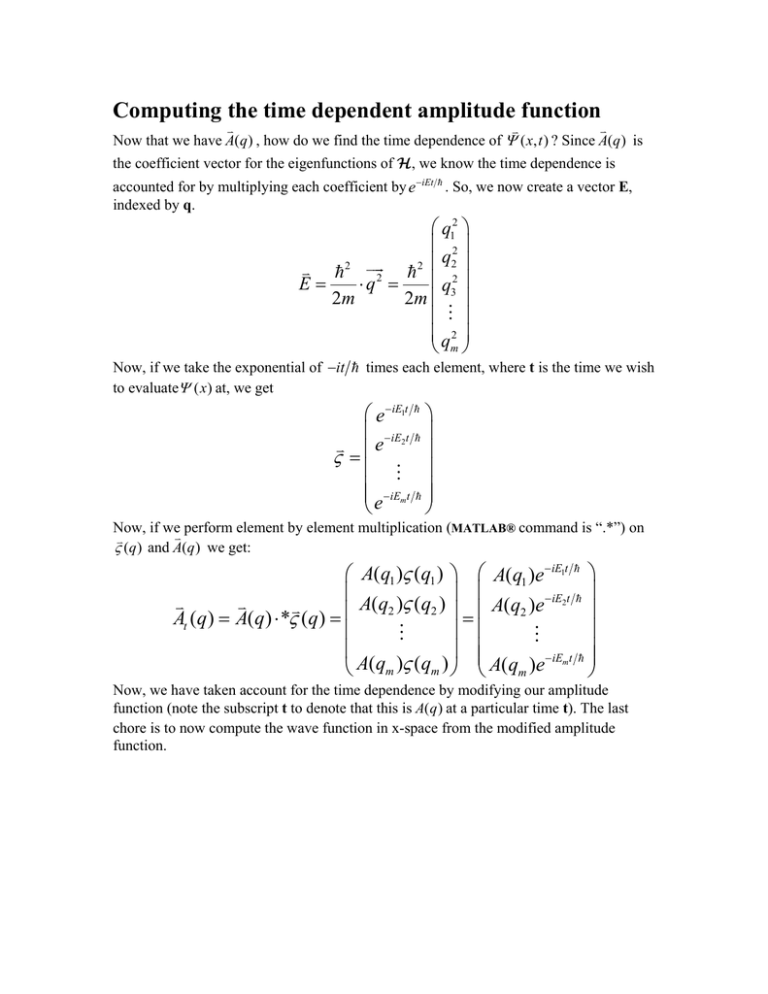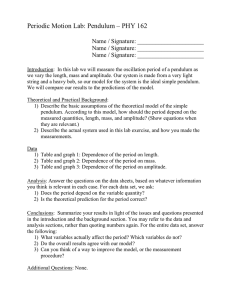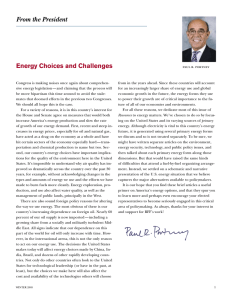Computing the time dependent amplitude function
advertisement

Computing the time dependent amplitude function K K K Now that we have A(q ) , how do we find the time dependence of Ψ ( x, t ) ? Since A(q ) is the coefficient vector for the eigenfunctions of H, we know the time dependence is accounted for by multiplying each coefficient by e −iEt = . So, we now create a vector E, indexed by q. ⎛ q12 ⎞ ⎜ 2⎟ q K = 2 JJG2 = 2 ⎜ 22 ⎟ ⎜q ⎟ ⋅q = E= 2m 2m ⎜ 3 ⎟ ⎜ # ⎟ ⎜ q2 ⎟ ⎝ m⎠ Now, if we take the exponential of −it = times each element, where t is the time we wish to evaluateΨ ( x ) at, we get ⎛ e −iE1t = ⎞ ⎜ − iE t = ⎟ K ⎜e 2 ⎟ ς = ⎜ # ⎟ ⎜⎜ −iEmt = ⎟⎟ ⎝e ⎠ Now, if weK perform element by element multiplication (MATLAB® command is “.*”) on K ς (q ) and A(q ) we get: ⎛ A(q1 )ς (q1 ) ⎞ ⎛ A(q1 )e− iE1t = ⎞ ⎜ ⎟ ⎜ − iE2t = ⎟ K K ς A ( q ) ( q ) A ( q ) e K 2 2 2 ⎟ ⎟=⎜ At (q) = A(q) ⋅ *ς (q) = ⎜ ⎜ ⎟ ⎜ ⎟ # # ⎟ ⎜ ⎟ ⎜⎜ − iEm t = ⎟ ς A ( q ) ( q ) A ( q ) e m m ⎠ ⎝ m ⎝ ⎠ Now, we have taken account for the time dependence by modifying our amplitude function (note the subscript t to denote that this is A(q ) at a particular time t). The last chore is to now compute the wave function in x-space from the modified amplitude function.







